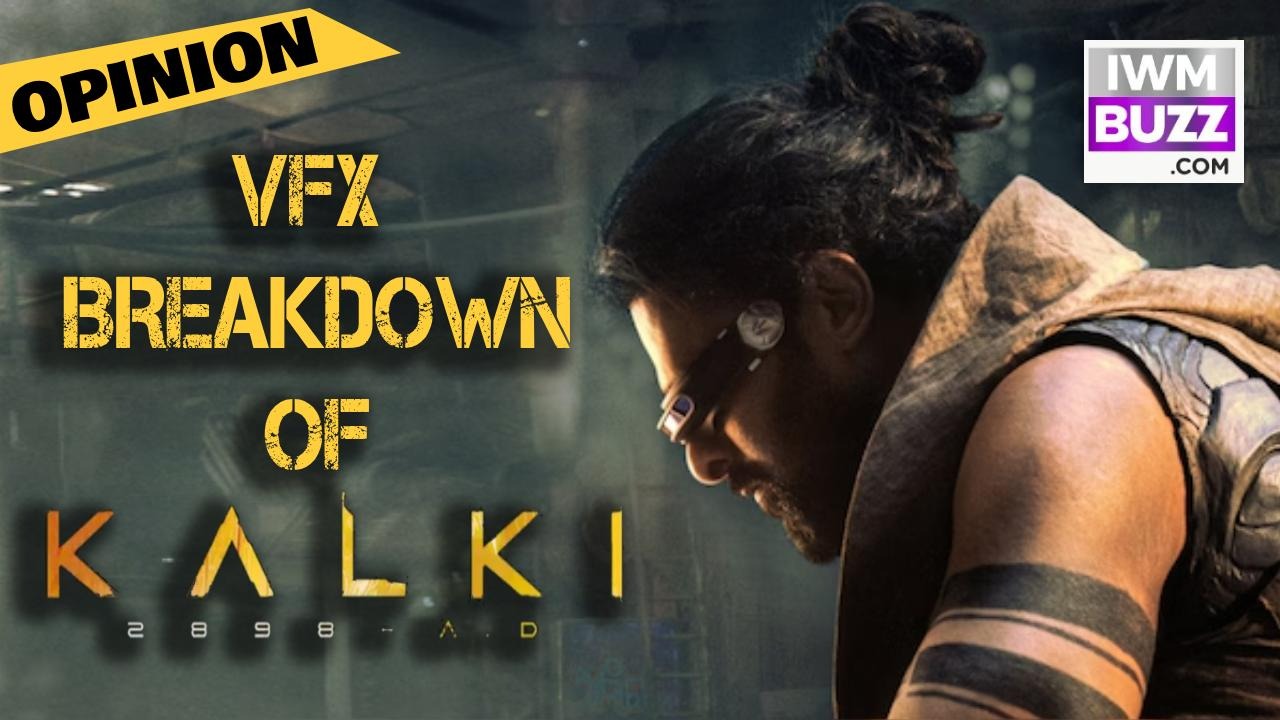The gargantuan success of Kalki 2898 AD acts as a huge sigh of relief for the makers, especially taking into account the history of Indian films and VFX technology (looking at you Adipurush). This is in the context of how the Indian audiences, who don’t accept mediocrity in the product they are being presented with are paying good money to be invested in the story and ambition.
Director Nag Ashwin and the entire team of film were cognizant of this and thus enabled a meticulous process of creating the world of Kalki 2898 AD practically and technologically.
As mentioned above, the VFX of Kalki 2898 AD continues to receive widespread acclaim and to acknowledge the team behind it – a team of 1200 artists powered by many VFX studios came together to create this world majorly led by Double Negative (DNEG), a subsidiary of Prime Focus.
But the factor that always intrigues one and all is just how much time, effort and careful ideation goes into creating the aforementioned CGI shots and sequences. Here is a piece that tries to delve into the VFX breakdown that explains the effort and acknowledges the effort.
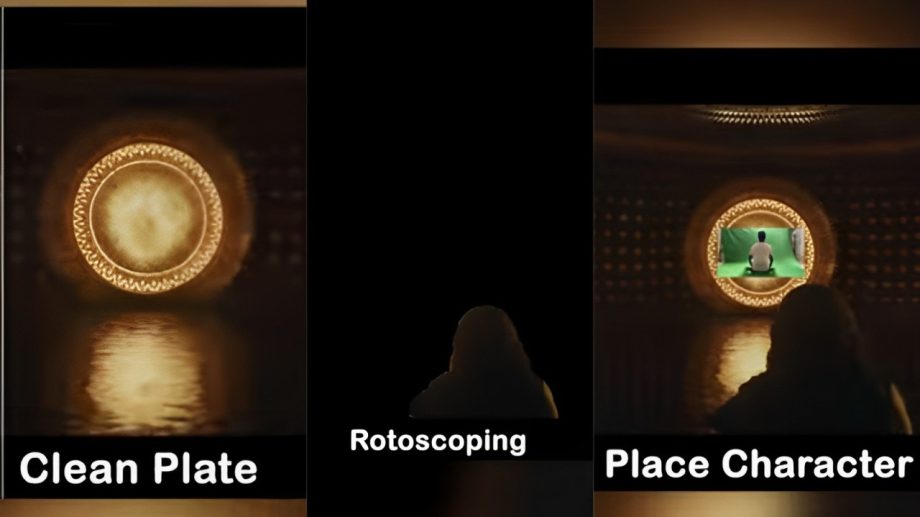
The final output that we see on the screen goes through a series of corrections and these are multiplied when CGI is involved. The sequence below should make things clearer for you. After having an actor shoot in front of a screen, the rotoscoping allows to get rid of the externals for the generated objects to be inserted. Adding a clean plate and adding objects like water (in this case), provides a base canvas for the lighting and shadowing ahead. By placing the character (also shot on a green screen) in the depth of its field, the externals are removed once again to move on to color correction. The objects and elements (needed as per the scene requirement) are placed before the final color correction takes place leading to a final output-
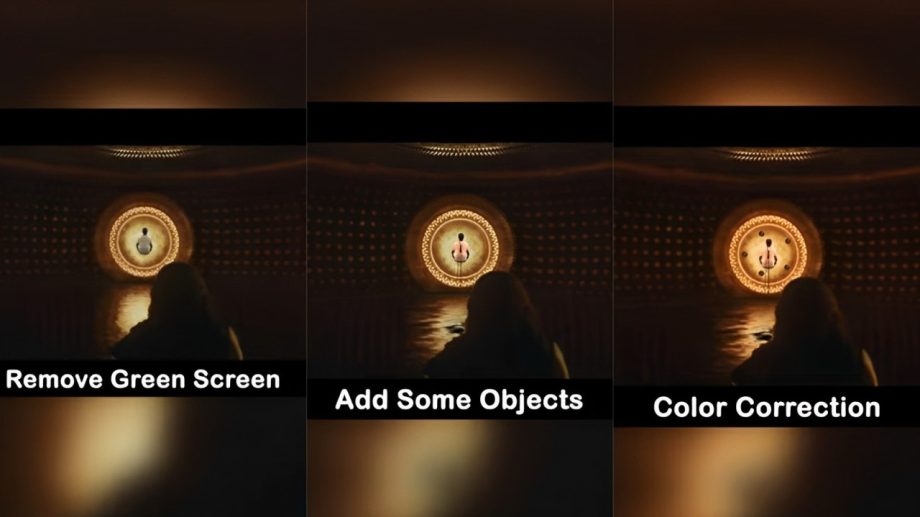
Visible & Invisible VFX
VFX, in its might be divided into two types – for simpler understanding – visible VFX and invisible VFX. To explain it better, when time portals and graphical elements you see in a film like Doctor Strange or any Avengers film – you know that is a VFX shot created on the computer; while on the other hand, invisible VFX is where you don’t see it but it is heavily VFXed – for instance, Shah Rukh Khan playing a dwarf in the film, Zero, which goes through multiple layering. Kalki 2898 AD mostly plays around with visible VFX but there are several moments of invisible VFX too, especially when you see Amitabh Bachchan’s Ashwatthama being a giant opposite Prabhas’ Bhairava.
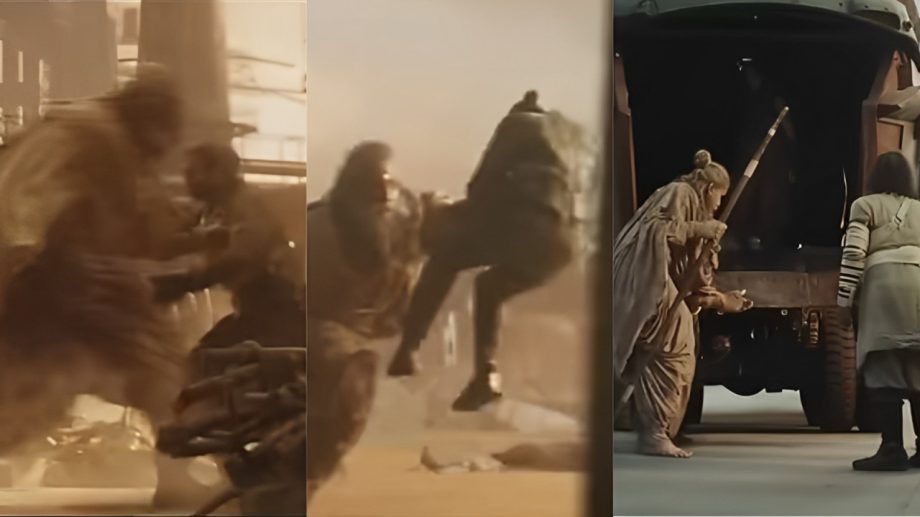
Indoor & Outdoor Shoot
There are an array of moments in the film where the implementation of CGI technology particularly stands out more than the others but amidst all that, the smaller details make for a bigger impact that might be missed. The problem with several Indian films (looking at you again Adipurush) is how shooting takes place indoors with the awareness of when it will go to the edit table. Cleaner plates, correct lighting and shadowing while shooting indoors indicate the clarity of a filmmaker and the tech team with their vision. For instance, the shot on the left involving Amitabh Bachchan is shot indoors where you can witness the unblurred edges on his shoulders and the bordering overall. The shot on the right thus makes it clearer how it is shot outdoors with a green screen, where the borders are more blended in and blurred in.
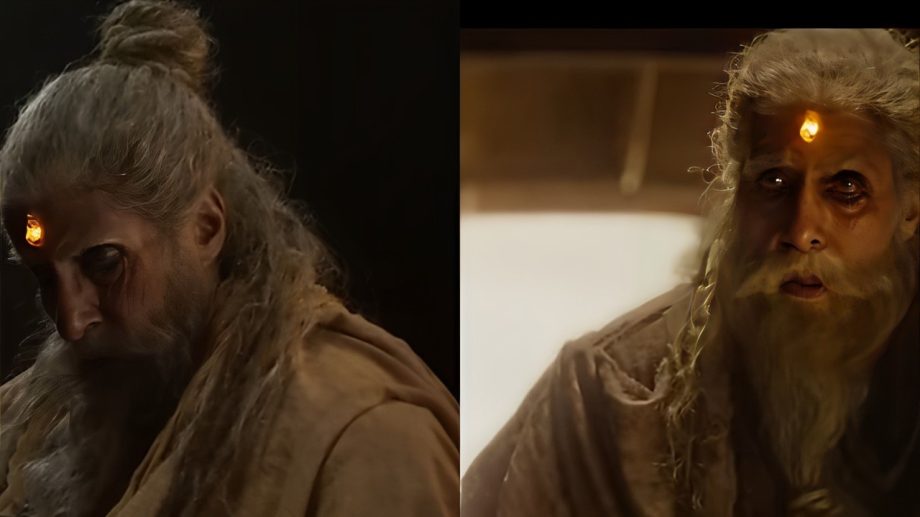
Wide Shots and Illusionary Templates
More often than not, the wide shots of a fantasy world that usually create an illusion of how mammoth the world is made up for the derivative effect that helps the viewer to believe in the close-up and single-location sequences. And according to several VFX artists, they aren’t as difficult to create courtesy the readymade templates that are available on software. For instance, the wide shot of the complex below on the left makes up for a breathtaking visual and makes you believe that the complex is indeed a dreamy place to be in. On the right is a template created by using digital matte software by adding layers making you believe in the 3D illusion.
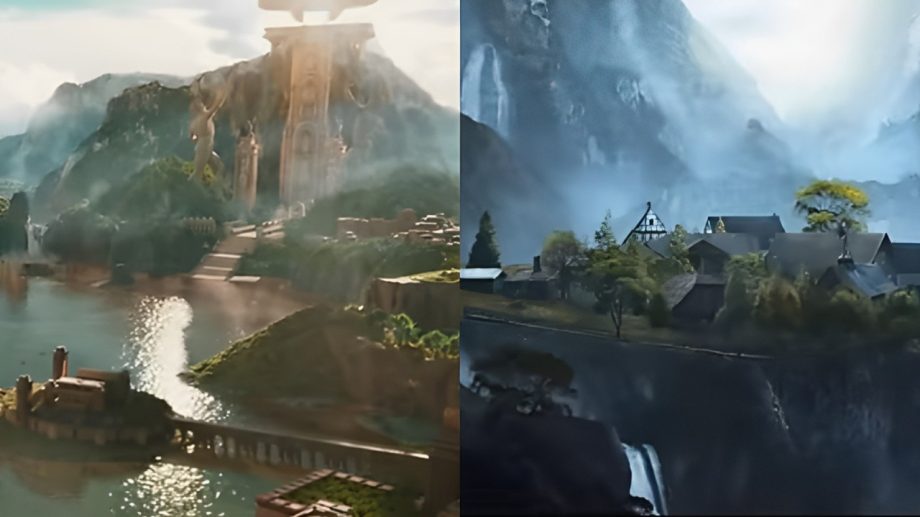
The technological advancement of the VFX industry and how much we can achieve in a fraction of the budgets allotted to big Hollywood films has been an indicator of the prowess Indian films can produce. Kalki 2898 AD is a huge leap forward, and we have more leaps to take.

